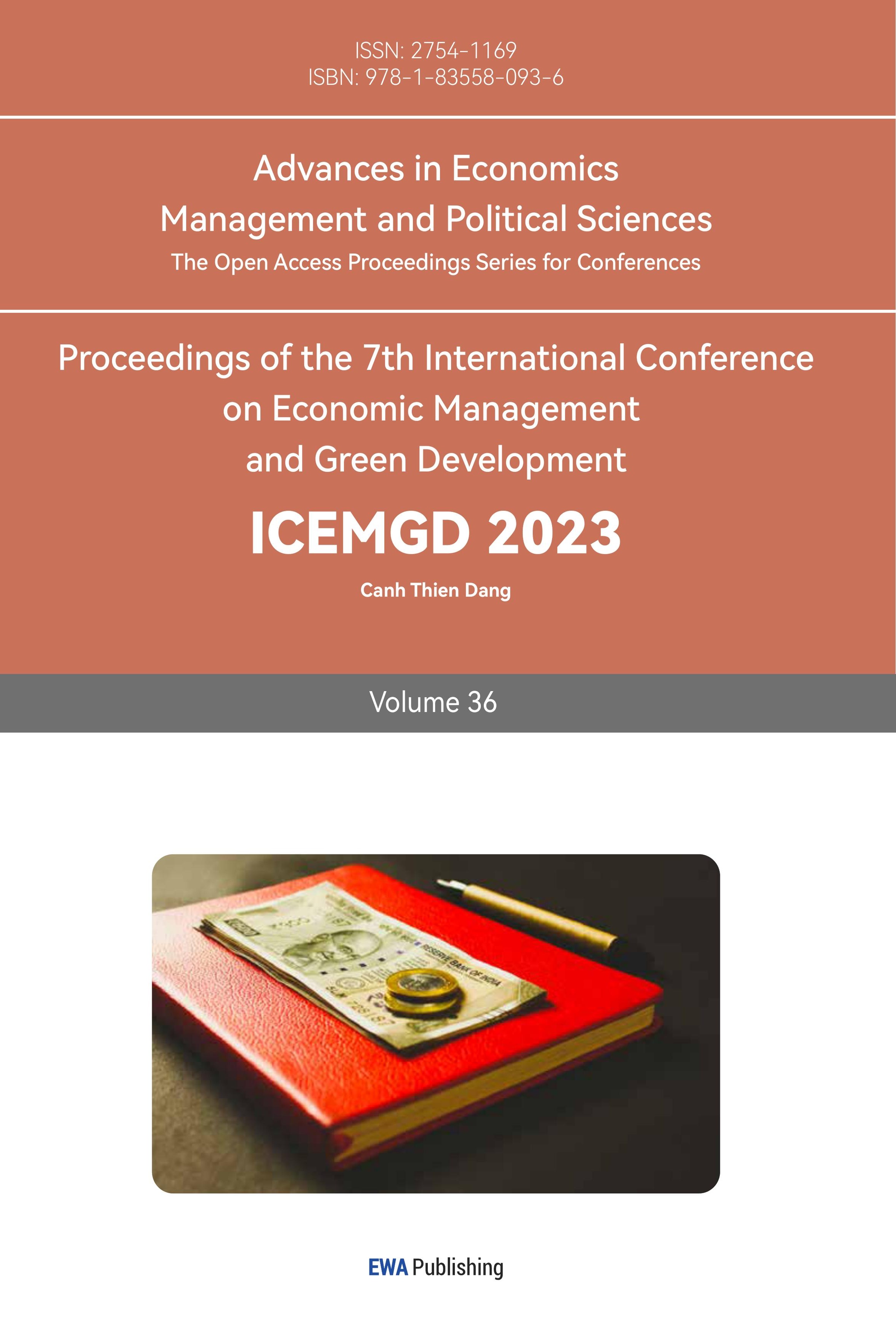References
[1]. Samuelson, W., Zeckhauser, R.: Status quo bias in decision making. Journal of risk and uncertainty, 1, 7-59 (1988).
[2]. Rubaltelli, E., Rubichi, S., Savadori, L., Tedeschi, M., Ferretti, R.: Numerical Information Format and Investment Decisions: Implications for the Disposition Effect and the Status Quo Bias. The Journal of Behavioral Finance, 6(1), 19–26 (2005).
[3]. Gigerenzer, G., Hoffrage, U.: How to Improve Bayesian Reasoning without Instruction: Frequency Formats. Psychological Review, 102, pp. 684–704 (1995).
[4]. Jain, T. N.: Alternative methods of accounting and decision making: A psycho-linguistical analysis. The Accounting Review, 48(1), 95-104 (1973).
[5]. Montalto, C. P., Sung, J.: Multiple imputation in the 1992 Survey of Consumer Finances. Financial Counseling and Planning, 7, 133-146 (1996).
[6]. Adisa, T. A., Abdulraheem, I., Isiaka, S. B.: Patriarchal hegemony: Investigating the impact of patriarchy on women’s work-life balance. Gender in Management, 34(1), 19–33. (2019).
[7]. Embrey, L., Fox, J.: Gender differences in the investment decision-making process. Financial Counseling and Planning, 8(2), 33-40 (1997).
[8]. Adrian, T., Rosenberg, J.: Stock Returns and Volatility: Pricing the Short-Run and Long-Run Components of Market Risk. The Journal of Finance (New York), 63(6), 2997–3030. (2008).
[9]. Hogan, C. E., Lewis, C. M.: Long-Run Investment Decisions, Operating Performance, and Shareholder Value Creation of Firms Adopting Compensation Plans Based on Economic Profits. The Journal of Financial and Quantitative Analysis, 40(4), 721–745 (2005).
[10]. Baker, H. K., Ricciardi, V.: How biases affect investor behaviour. The European Financial Review, 7-10. (2014).
[11]. Seawright, R.P.: Investors’ 10 Most Common Behavioral Biases., http://rpseawright.wordpress.com, last accessed 2023/04/16 (2012).
Cite this article
Xiang,M. (2023). The Impact of Status Quo Bias on Investment Decisions. Advances in Economics, Management and Political Sciences,36,138-143.
Data availability
The datasets used and/or analyzed during the current study will be available from the authors upon reasonable request.
Disclaimer/Publisher's Note
The statements, opinions and data contained in all publications are solely those of the individual author(s) and contributor(s) and not of EWA Publishing and/or the editor(s). EWA Publishing and/or the editor(s) disclaim responsibility for any injury to people or property resulting from any ideas, methods, instructions or products referred to in the content.
About volume
Volume title: Proceedings of the 7th International Conference on Economic Management and Green Development
© 2024 by the author(s). Licensee EWA Publishing, Oxford, UK. This article is an open access article distributed under the terms and
conditions of the Creative Commons Attribution (CC BY) license. Authors who
publish this series agree to the following terms:
1. Authors retain copyright and grant the series right of first publication with the work simultaneously licensed under a Creative Commons
Attribution License that allows others to share the work with an acknowledgment of the work's authorship and initial publication in this
series.
2. Authors are able to enter into separate, additional contractual arrangements for the non-exclusive distribution of the series's published
version of the work (e.g., post it to an institutional repository or publish it in a book), with an acknowledgment of its initial
publication in this series.
3. Authors are permitted and encouraged to post their work online (e.g., in institutional repositories or on their website) prior to and
during the submission process, as it can lead to productive exchanges, as well as earlier and greater citation of published work (See
Open access policy for details).
References
[1]. Samuelson, W., Zeckhauser, R.: Status quo bias in decision making. Journal of risk and uncertainty, 1, 7-59 (1988).
[2]. Rubaltelli, E., Rubichi, S., Savadori, L., Tedeschi, M., Ferretti, R.: Numerical Information Format and Investment Decisions: Implications for the Disposition Effect and the Status Quo Bias. The Journal of Behavioral Finance, 6(1), 19–26 (2005).
[3]. Gigerenzer, G., Hoffrage, U.: How to Improve Bayesian Reasoning without Instruction: Frequency Formats. Psychological Review, 102, pp. 684–704 (1995).
[4]. Jain, T. N.: Alternative methods of accounting and decision making: A psycho-linguistical analysis. The Accounting Review, 48(1), 95-104 (1973).
[5]. Montalto, C. P., Sung, J.: Multiple imputation in the 1992 Survey of Consumer Finances. Financial Counseling and Planning, 7, 133-146 (1996).
[6]. Adisa, T. A., Abdulraheem, I., Isiaka, S. B.: Patriarchal hegemony: Investigating the impact of patriarchy on women’s work-life balance. Gender in Management, 34(1), 19–33. (2019).
[7]. Embrey, L., Fox, J.: Gender differences in the investment decision-making process. Financial Counseling and Planning, 8(2), 33-40 (1997).
[8]. Adrian, T., Rosenberg, J.: Stock Returns and Volatility: Pricing the Short-Run and Long-Run Components of Market Risk. The Journal of Finance (New York), 63(6), 2997–3030. (2008).
[9]. Hogan, C. E., Lewis, C. M.: Long-Run Investment Decisions, Operating Performance, and Shareholder Value Creation of Firms Adopting Compensation Plans Based on Economic Profits. The Journal of Financial and Quantitative Analysis, 40(4), 721–745 (2005).
[10]. Baker, H. K., Ricciardi, V.: How biases affect investor behaviour. The European Financial Review, 7-10. (2014).
[11]. Seawright, R.P.: Investors’ 10 Most Common Behavioral Biases., http://rpseawright.wordpress.com, last accessed 2023/04/16 (2012).









